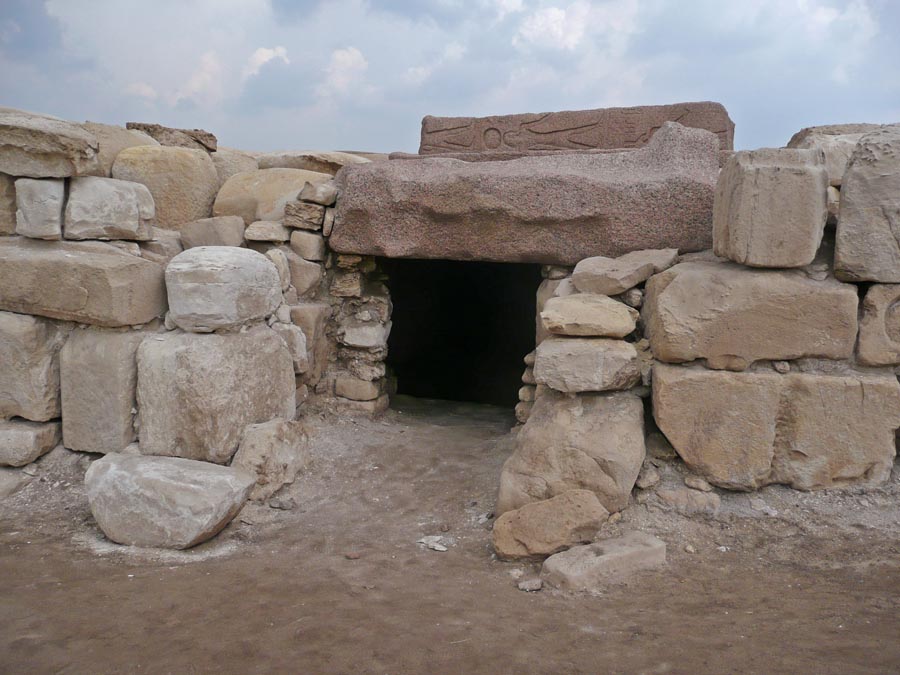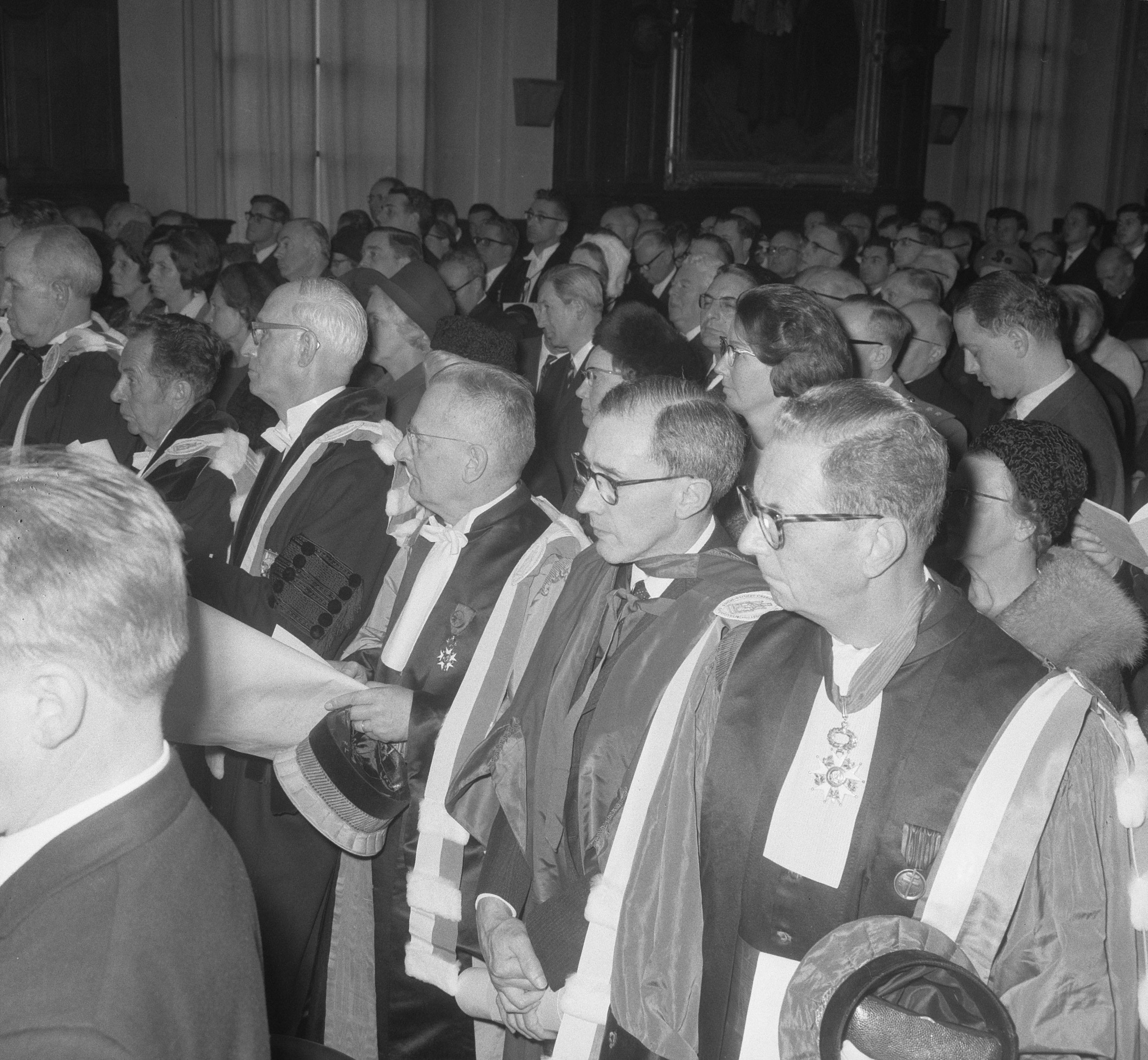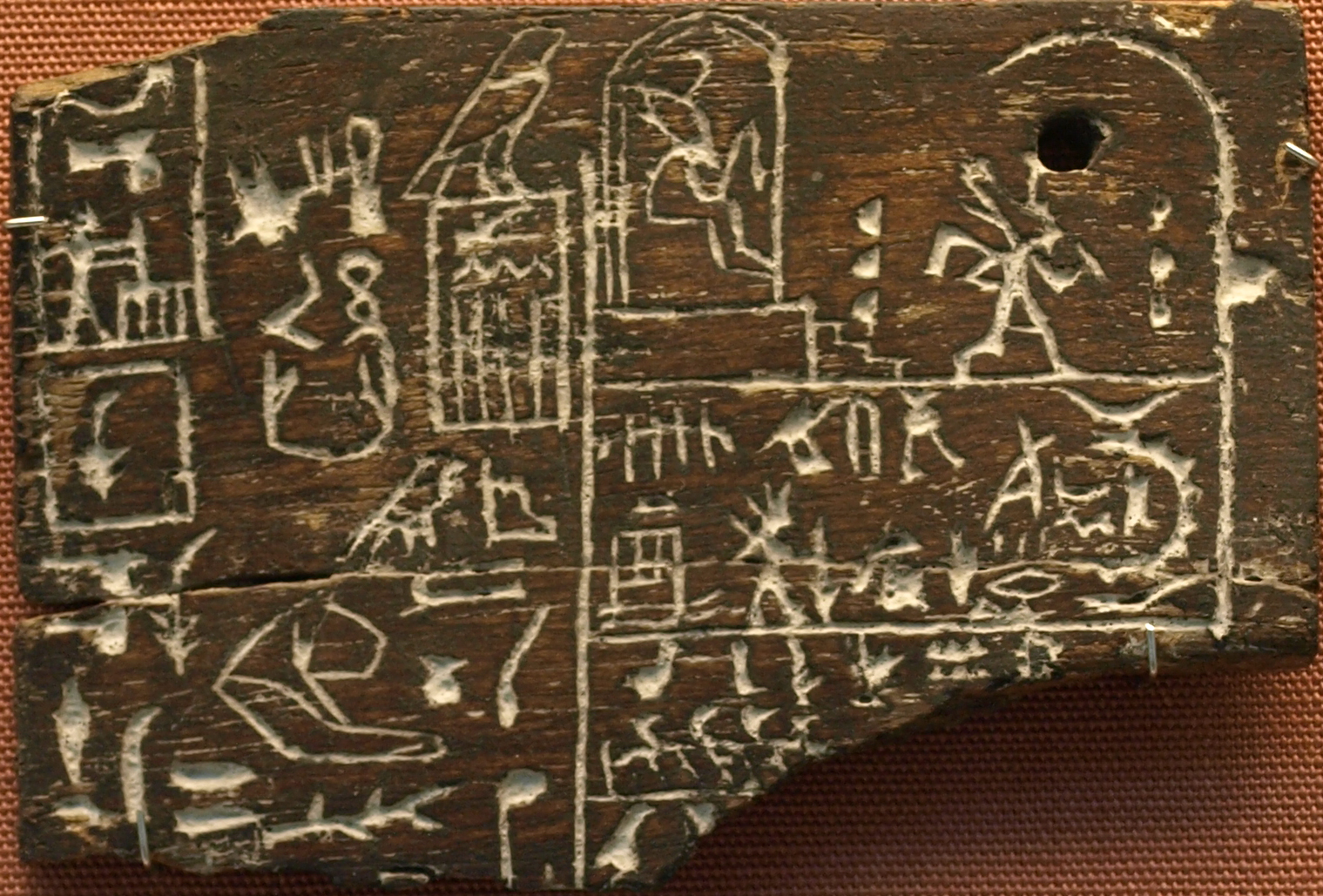|
Hornakht
Prince Hornakht (or Harnakht) was the son of pharaoh Osorkon II of the 22nd Dynasty. He was appointed by Osorkon II to the office of chief priest of Amun at Tanis to strengthen this king's authority in Lower Egypt. However, this was primarily a political move on Osorkon II's part since Hornakht died before the age of 10. When Hornakht died at this young age, Osorkon II made provisions to ensure that his son would be buried in this king's own tomb at Tanis. While tomb robbers managed to penetrate the burial of Hornakht in antiquity, his sarcophagus still preserved parts of the tomb treasures which were once placed upon the prince's mummy since a large granite block placed over Hornakht's burial prevented them from lifting its lid completely. Secondly, most of the grave robbers attention were focused upon the sarcophagus of Osorkon II which would have featured vastly more splendid treasures. The grave robbers succeeded in removing the gold funerary mask which covered Hornakht's ... [...More Info...] [...Related Items...] OR: [Wikipedia] [Google] [Baidu] |
Osorkon II
Usermaatre Setepenamun Osorkon II was the fifth king of the Twenty-second Dynasty of Ancient Egypt and the son of King Takelot I and Queen Kapes. He ruled Egypt from approximately 872 BC to 837 BC from Tanis, the capital of that dynasty. After succeeding his father, Osorkon II was faced with the competing rule of his cousin, King Harsiese A, who controlled both Thebes and the Western Oasis of Egypt. Potentially, Harsiese's kingship could have posed a serious challenge to the authority of Osorkon, however, when Harsiese died in 860 BC, Osorkon II acted to ensure that no king would replace Harsiese. He appointed his son, Nimlot C, as the high priest of Amun at Thebes, which would have been the source for a successor to Harsiese. This consolidated the king's authority over Upper Egypt and thereafter, Osorkon II ruled over a united Egypt. Osorkon II's reign was a time of prosperity for Egypt and large-scale monumental building ensued. Osorkon II was the last king of the Twenty-sec ... [...More Info...] [...Related Items...] OR: [Wikipedia] [Google] [Baidu] |
Karomama I
Queen Karomama I was an Egyptian queen, married to Osorkon II. She was part of the Twenty-second Dynasty of Egypt. Family Karomama was likely a daughter of Pharaoh Takelot I. She was one of three known wives of Osorkon II. The other wives being Isetemkheb G and Djedmutesankh iv.Aidan Dodson & Dyan Hilton: ''The Complete Royal Families of Ancient Egypt''. Thames & Hudson, 2004, Karomama was the mother of at least two sons and three daughters: * Prince Shoshenq D, was High Priest of Ptah * Prince Hornakht was the High Priest of Amun in Tanis. He was buried in his father's tomb at Tanis, having died at the age of ca 8 or 9 years old.Klaus Baer, The Libyan and Nubian Kings of Egypt: Notes on the Chronology of Dynasties XXII to XXVI, Journal of Near Eastern Studies, Vol. 32, No. 1/2 (Jan. - Apr., 1973), pp. 4-25 * Princess Tashakheper may have served as God's Wife of Amun during the reign of Takelot III * Princess Karomama C, who may be identical to Karomama Meritmut, a God's ... [...More Info...] [...Related Items...] OR: [Wikipedia] [Google] [Baidu] |
Pierre Montet
Jean Pierre Marie Montet (27 June 1885 – 19 June 1966) was a French Egyptologist. Biography Montet was born in Villefranche-sur-Saône, Rhône, and began his studies under Victor Loret at the University of Lyon. He excavated at Byblos in Lebanon between 1921 and 1924, excavating tombs of rulers from Middle Kingdom times. Between 1929 and 1939, he excavated at Tanis, Egypt, finding the royal necropolis of the Twenty-first and Twenty-second Dynasties: those finds almost equalled that of Tutankhamun's tomb in the Valley of the Kings. In the 1939–1940 Egypt excavation season, he discovered the completely-intact tombs of three Egyptian pharaohs at Tanis: Psusennes I, Amenemope, and Shoshenq II along with the partially plundered tomb of Takelot I. The latter tomb contained a gold bracelet of Osorkon I, Takelot's father, as well as a heart scarab. He also found the fully plundered tomb of Osorkon II as well as the partly plundered tomb of this king's son, Prince Hornakht ... [...More Info...] [...Related Items...] OR: [Wikipedia] [Google] [Baidu] |
22nd Dynasty
The Twenty-second Dynasty of Egypt is also known as the Bubastite Dynasty, since the pharaohs originally ruled from the city of Bubastis. It was founded by Shoshenq I. The Twenty-first, Twenty-second, Twenty-third, Twenty-fourth, and Twenty-fifth dynasties of ancient Egypt are often combined under the group designation of the Third Intermediate Period. Rulers The pharaohs of the Twenty-second Dynasty were a series of Meshwesh ( ancient Libyan tribe) chieftains, who ruled from c. 943 BC until 716 BC. They had settled in Egypt since the Twentieth Dynasty and were known in Egypt as the 'Great Chiefs of the Ma' (Ma being a synonym of Meshwesh). Manetho states that this Egyptianized ancient Libyan dynasty first ruled over Bubastis, but its rulers almost certainly governed from Tanis, which was their capital and the city where their tombs have been excavated. Another pharaoh who belongs to this group is Tutkheperre Shoshenq. His period of rule within this dynasty is currently ... [...More Info...] [...Related Items...] OR: [Wikipedia] [Google] [Baidu] |
Douglas Derry
Douglas may refer to: People * Douglas (given name) * Douglas (surname) Animals * Douglas (parrot), macaw that starred as the parrot ''Rosalinda'' in Pippi Longstocking *Douglas the camel, a camel in the Confederate Army in the American Civil War Businesses * Douglas Aircraft Company * Douglas (cosmetics), German cosmetics retail chain in Europe * Douglas (motorcycles), British motorcycle manufacturer Peerage and Baronetage * Duke of Douglas * Earl of Douglas, or any holder of the title * Marquess of Douglas, or any holder of the title * Douglas Baronets Peoples * Clan Douglas, a Scottish kindred * Dougla people, West Indians of both African and East Indian heritage Places Australia * Douglas, Queensland, a suburb of Townsville * Douglas, Queensland (Toowoomba Region), a locality * Port Douglas, North Queensland, Australia * Shire of Douglas, in northern Queensland Belize * Douglas, Belize Canada * Douglas, New Brunswick * Douglas Parish, New Brunswick * Doug ... [...More Info...] [...Related Items...] OR: [Wikipedia] [Google] [Baidu] |
9th-century BC Deaths
The 9th century was a period from 801 ( DCCCI) through 900 ( CM) in accordance with the Julian calendar. The Carolingian Renaissance and the Viking raids occurred within this period. In the Middle East, the House of Wisdom was founded in Abbasid Baghdad, attracting many scholars to the city. The field of algebra was founded by the Muslim polymath al-Khwarizmi. The most famous Islamic Scholar Ahmad ibn Hanbal was tortured and imprisoned by Abbasid official Ahmad ibn Abi Du'ad during the reign of Abbasid caliph al-Mu'tasim and caliph al-Wathiq. In Southeast Asia, the height of the Mataram Kingdom happened in this century, while Burma would see the establishment of the major kingdom of Pagan. Tang China started the century with the effective rule under Emperor Xianzong and ended the century with the Huang Chao rebellions. While the Maya experienced widespread political collapse in the central Maya region, resulting in internecine warfare, the abandonment of cities, and a northward ... [...More Info...] [...Related Items...] OR: [Wikipedia] [Google] [Baidu] |
Ancient Egyptian Princes
Ancient history is a time period from the beginning of writing and recorded human history to as far as late antiquity. The span of recorded history is roughly 5,000 years, beginning with the Sumerian cuneiform script. Ancient history covers all continents inhabited by humans in the period 3000 BCAD 500. The three-age system periodizes ancient history into the Stone Age, the Bronze Age, and the Iron Age, with recorded history generally considered to begin with the Bronze Age. The start and end of the three ages varies between world regions. In many regions the Bronze Age is generally considered to begin a few centuries prior to 3000 BC, while the end of the Iron Age varies from the early first millennium BC in some regions to the late first millennium AD in others. During the time period of ancient history, the world population was already exponentially increasing due to the Neolithic Revolution, which was in full progress. While in 10,000 BC, the world population stood ... [...More Info...] [...Related Items...] OR: [Wikipedia] [Google] [Baidu] |
People Of The Twenty-second Dynasty Of Egypt
A person ( : people) is a being that has certain capacities or attributes such as reason, morality, consciousness or self-consciousness, and being a part of a culturally established form of social relations such as kinship, ownership of property, or legal responsibility. The defining features of personhood and, consequently, what makes a person count as a person, differ widely among cultures and contexts. In addition to the question of personhood, of what makes a being count as a person to begin with, there are further questions about personal identity and self: both about what makes any particular person that particular person instead of another, and about what makes a person at one time the same person as they were or will be at another time despite any intervening changes. The plural form "people" is often used to refer to an entire nation or ethnic group (as in "a people"), and this was the original meaning of the word; it subsequently acquired its use as a plural form of per ... [...More Info...] [...Related Items...] OR: [Wikipedia] [Google] [Baidu] |
Naos (hieroglyph)
Naos (Greek ναός "temple, shrine") the descriptive name given to an Egyptian hieroglyph ( Gardiner O18). The Jubilee pavilion hieroglyph is a side view of the pharaoh seated, in opposing views, wearing the two separate crowns, the crown of the South, the hedjet, and the crown of the North (the Nile Delta), the deshret. The pavilion is composed of two side views of the naos hieroglyph. The early Old Kingdom labels, for example Pharaoh Den, portrayed him in a side view in his naos. An example of the combined, opposed, view with the two crowns, is the lintel of Senusret II, 12th Dynasty, 19th century BCE. It shows the naos curved roofs of each half of the pavilion hieroglyph. A ''naophoros'' "temple-bearer" is a type of statue holding the naos symbol. An example is the Ramesside-era statue of Panehsy, overseer of the treasury. The earliest examples of such statues date to the 18th Dynasty.Jacques Vandier, ''Manuel d'archéologie égyptienne'', A. et J. Picard 1952, p.68 S ... [...More Info...] [...Related Items...] OR: [Wikipedia] [Google] [Baidu] |
Osiris
Osiris (, from Egyptian ''wsjr'', cop, ⲟⲩⲥⲓⲣⲉ , ; Phoenician: 𐤀𐤎𐤓, romanized: ʾsr) is the god of fertility, agriculture, the afterlife, the dead, resurrection, life, and vegetation in ancient Egyptian religion. He was classically depicted as a green-skinned deity with a pharaoh's beard, partially mummy-wrapped at the legs, wearing a distinctive atef crown, and holding a symbolic crook and flail. He was one of the first to be associated with the mummy wrap. When his brother, Set cut him up into pieces after killing him, Osiris' wife Isis found all the pieces and wrapped his body up, enabling him to return to life. Osiris was widely worshipped until the decline of ancient Egyptian religion during the rise of Christianity in the Roman Empire. Osiris was at times considered the eldest son of the earth god Geb and the sky goddess Nut, as well as being brother and husband of Isis, and brother of Set, Nephthys, and Horus the Elder, with Horus the Younger ... [...More Info...] [...Related Items...] OR: [Wikipedia] [Google] [Baidu] |
Amun-Ra
Amun (; also ''Amon'', ''Ammon'', ''Amen''; egy, jmn, reconstructed as (Old Egyptian and early Middle Egyptian) → (later Middle Egyptian) → (Late Egyptian), cop, Ⲁⲙⲟⲩⲛ, Amoun) romanized: ʾmn) was a major ancient Egyptian deity who appears as a member of the Hermopolitan Ogdoad. Amun was attested from the Old Kingdom together with his wife Amunet. With the 11th Dynasty ( 21st century BC), Amun rose to the position of patron deity of Thebes by replacing Montu. After the rebellion of Thebes against the Hyksos and with the rule of Ahmose I (16th century BC), Amun acquired national importance, expressed in his fusion with the Sun god, Ra, as Amun-Ra (alternatively spelled Amon-Ra or Amun-Re). Amun-Ra retained chief importance in the Egyptian pantheon throughout the New Kingdom (with the exception of the " Atenist heresy" under Akhenaten). Amun-Ra in this period (16th to 11th centuries BC) held the position of transcendental, self-created creator deity "p ... [...More Info...] [...Related Items...] OR: [Wikipedia] [Google] [Baidu] |
Saqqara
Saqqara ( ar, سقارة, ), also spelled Sakkara or Saccara in English , is an Egyptian village in Giza Governorate, that contains ancient burial grounds of Egyptian royalty, serving as the necropolis for the ancient Egyptian capital, Memphis. Saqqara contains numerous pyramids, including the Step pyramid of Djoser, sometimes referred to as the Step Tomb, and a number of mastaba tombs. Located some south of modern-day Cairo, Saqqara covers an area of around . Saqqara contains the oldest complete stone building complex known in history, the Pyramid of Djoser, built during the Third Dynasty. Another sixteen Egyptian kings built pyramids at Saqqara, which are now in various states of preservation. High officials added private funeral monuments to this necropolis during the entire Pharaonic period. It remained an important complex for non-royal burials and cult ceremonies for more than 3,000 years, well into Ptolemaic and Roman times. North of the area known as Saqqara lie ... [...More Info...] [...Related Items...] OR: [Wikipedia] [Google] [Baidu] |





_1938.jpg)


_(2865505031).jpg)